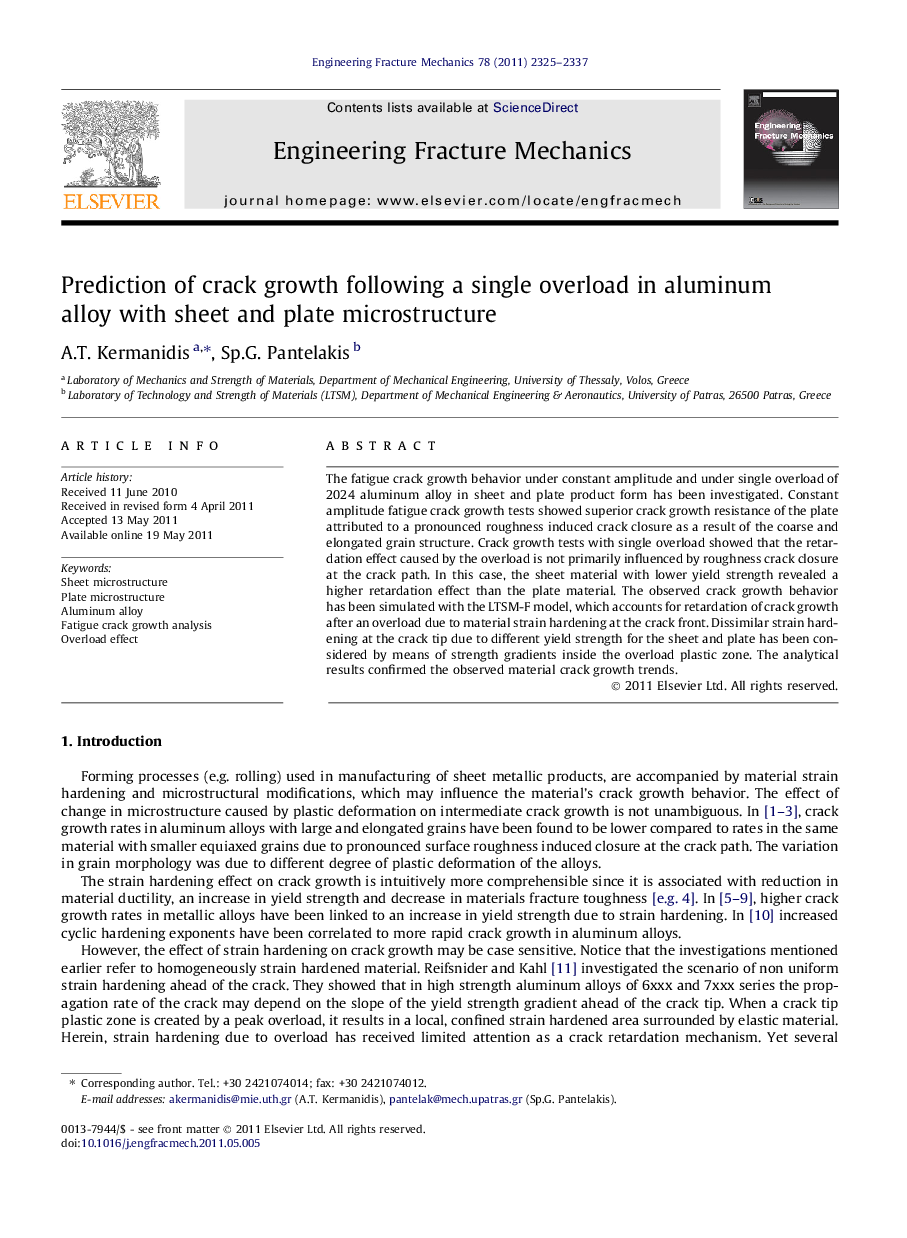| Article ID | Journal | Published Year | Pages | File Type |
|---|---|---|---|---|
| 767622 | Engineering Fracture Mechanics | 2011 | 13 Pages |
The fatigue crack growth behavior under constant amplitude and under single overload of 2024 aluminum alloy in sheet and plate product form has been investigated. Constant amplitude fatigue crack growth tests showed superior crack growth resistance of the plate attributed to a pronounced roughness induced crack closure as a result of the coarse and elongated grain structure. Crack growth tests with single overload showed that the retardation effect caused by the overload is not primarily influenced by roughness crack closure at the crack path. In this case, the sheet material with lower yield strength revealed a higher retardation effect than the plate material. The observed crack growth behavior has been simulated with the LTSM-F model, which accounts for retardation of crack growth after an overload due to material strain hardening at the crack front. Dissimilar strain hardening at the crack tip due to different yield strength for the sheet and plate has been considered by means of strength gradients inside the overload plastic zone. The analytical results confirmed the observed material crack growth trends.
► The fatigue crack growth behavior of 2024 sheet and plate aluminum alloy has been investigated. ► Constant amplitude results showed superior crack growth resistance of the plate due to RICC effect. ► In the post overload regime, ductility of the sheet material is more relevant for crack growth retardation than RICC. ► The LTSM-F model, which accounts for retardation after overload due to strain hardening, is in good agreement with experiments.
